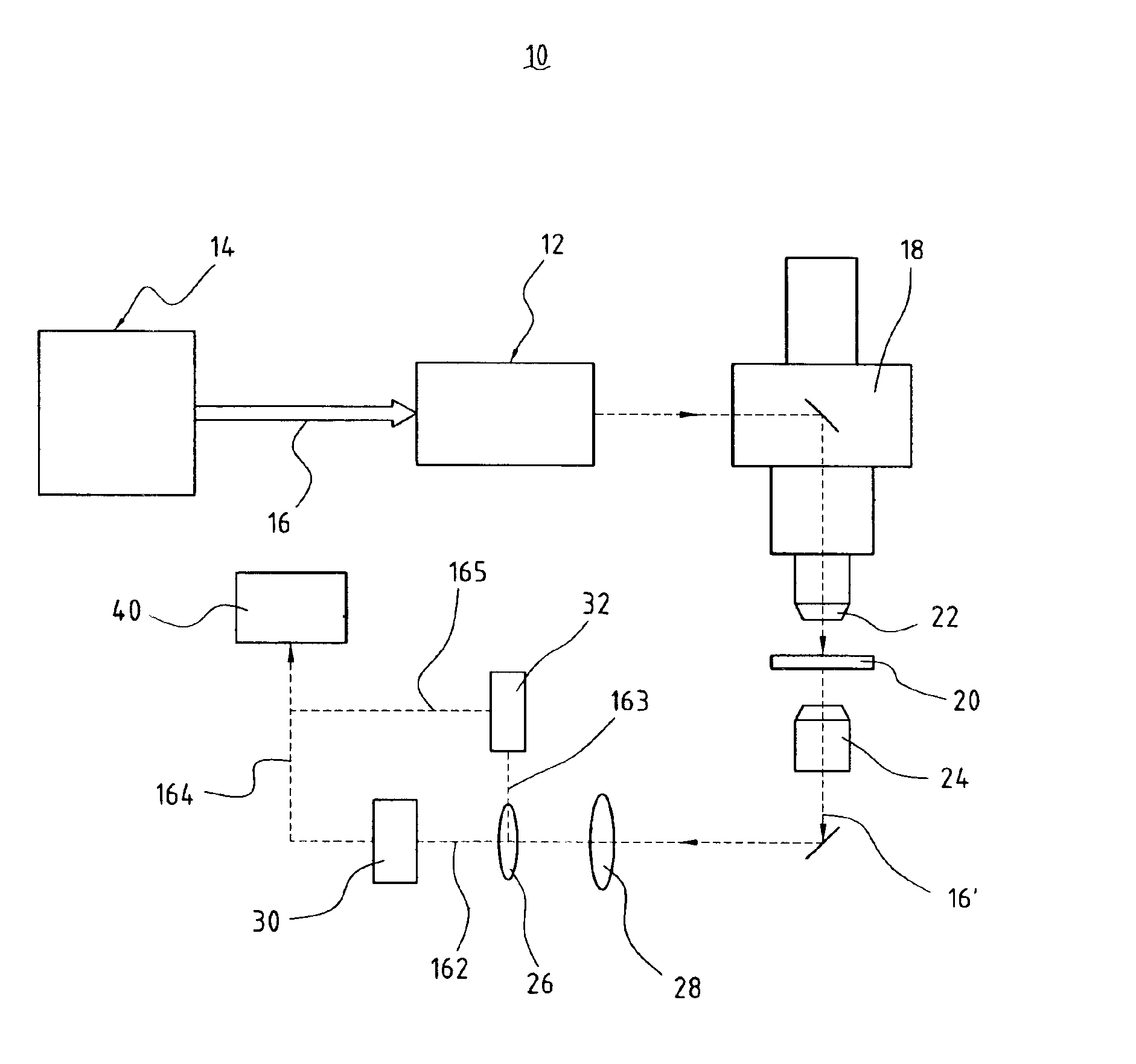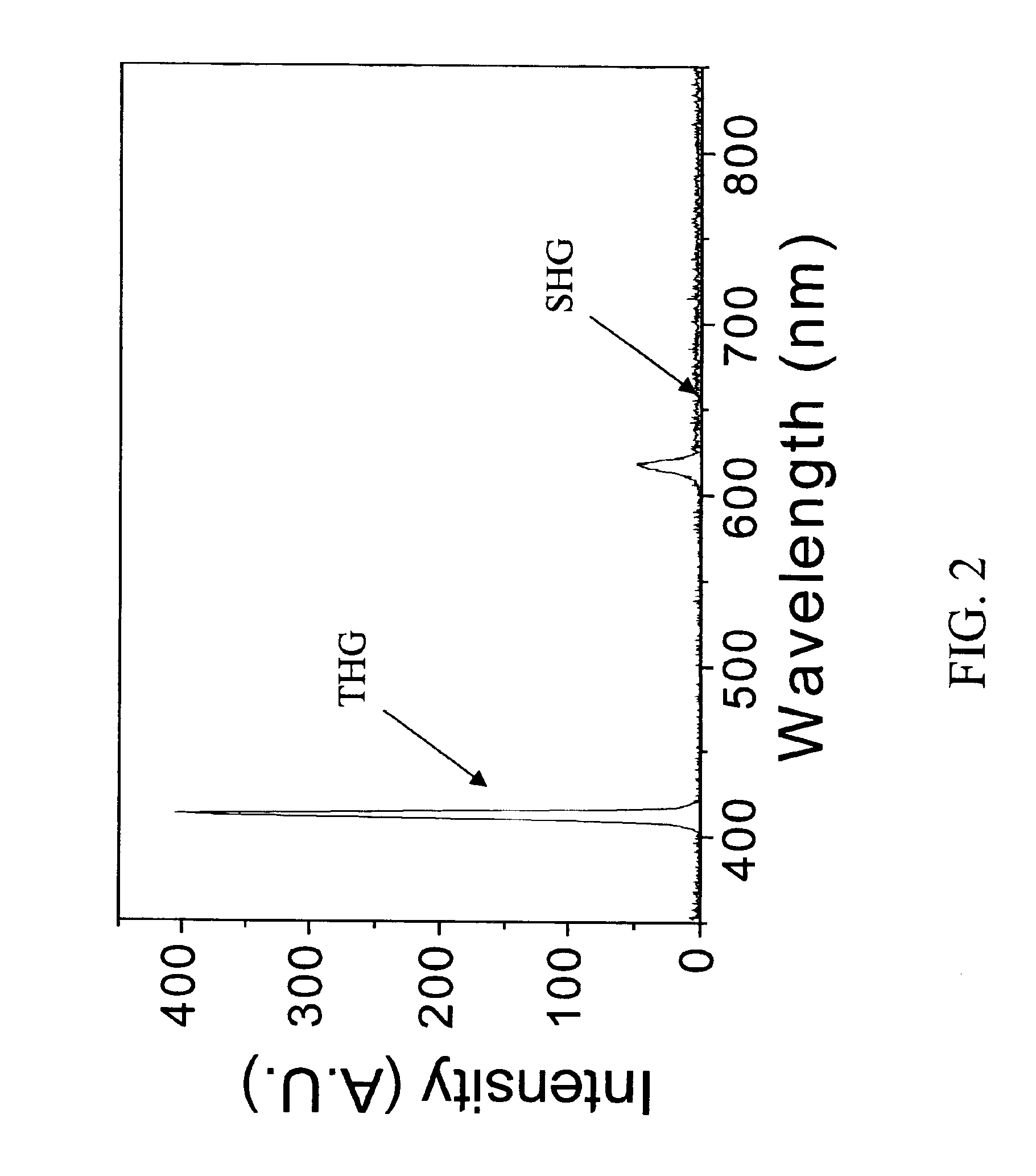Harmonic generation microscopy
a technology of harmonic generation and microscopy, applied in the field of harmonic generation microscopy, can solve the problems of inducing affecting the image quality of observed samples, and toxic in vivo samples of fluorescent dyes, and achieve the effect of removing photo-damage to observed samples
- Summary
- Abstract
- Description
- Claims
- Application Information
AI Technical Summary
Benefits of technology
Problems solved by technology
Method used
Image
Examples
Embodiment Construction
[0018]With reference to the drawings and in particular to FIG. 1, a microscopic imaging system in accordance with the present invention, generally designated with reference numeral 10, comprises a scanning device 12 that receives a laser beam 16 from a laser device or laser source 14, such as a short pulse laser device. Optic elements, such as a mirror array (not shown) capable of two-dimensional rotation, are included in the scanning device 12 for directing the laser beam 16 into a microscope 18.
[0019]A sample 20 to be observed is positioned in the microscope 18. The sample can be any suitable ones, such as a biological sample on a glass plate. This in known to those having ordinary skills in the field of biology and thus no further detail is needed herein.
[0020]The laser beam 16 that is directed into the microscope 18 by the scanning device 12 is focused by an objective lens 22 of the microscope 18 onto the sample 20, which induces an observation beam 16′ by letting the laser beam...
PUM
| Property | Measurement | Unit |
|---|---|---|
| wavelength | aaaaa | aaaaa |
| wavelength | aaaaa | aaaaa |
| wavelength | aaaaa | aaaaa |
Abstract
Description
Claims
Application Information
 Login to View More
Login to View More - R&D
- Intellectual Property
- Life Sciences
- Materials
- Tech Scout
- Unparalleled Data Quality
- Higher Quality Content
- 60% Fewer Hallucinations
Browse by: Latest US Patents, China's latest patents, Technical Efficacy Thesaurus, Application Domain, Technology Topic, Popular Technical Reports.
© 2025 PatSnap. All rights reserved.Legal|Privacy policy|Modern Slavery Act Transparency Statement|Sitemap|About US| Contact US: help@patsnap.com



